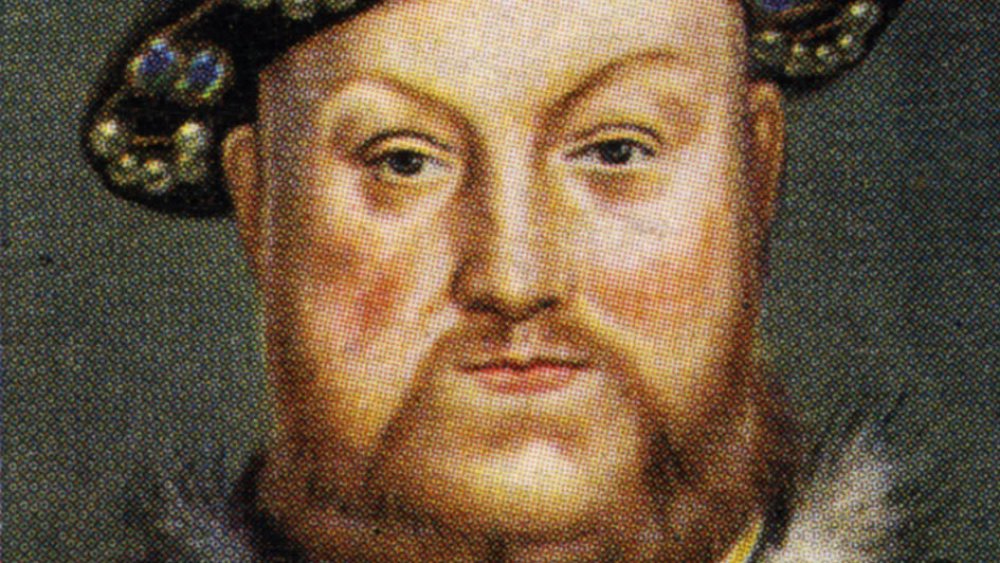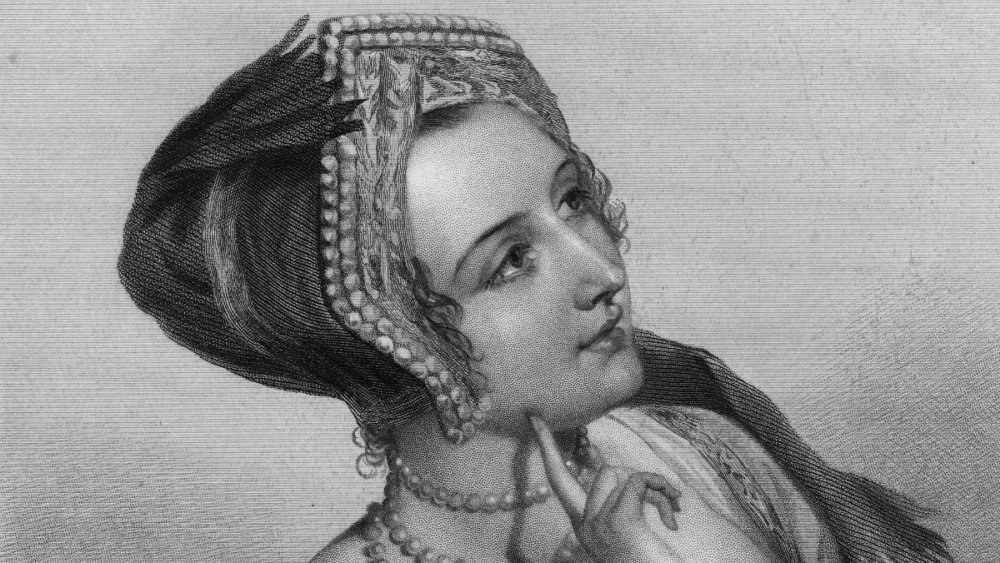Myths About Henry VIII You Can Stop Believing
The story of Henry VIII of England is almost as big as his waistline (which was big indeed). The man lived a life of ferocious appetites — for learning (he wrote poetry and music), sports (he loved to take part in a good joust), food (the aforementioned waistline), and women (six wives, plus however many mistresses). Passionate? Yes, and in so many ways. All of that was spread across his reign of 37 years as King of England. He wasn't supposed to have the job in the first place — his older brother, Arthur, should have sat upon the throne, but had the poor manners to die before their father did, moving Henry up one in the line of succession, which he did — succeed to the throne, that is — at the tender age of 17.
Headstrong? Yes. Wanted what he wanted when he wanted it? Unquestionably. Willing to do whatever it took to achieve his goals? Depended on the goal, but largely, yes, with no one allowed to stand in his way.
Not all of his wives lost their heads (though Anne Boleyn did)
Take, for instance, his mythic bloodthirstiness, with some 72,000 people executed during his reign (and a fair number on his direct order). It is indeed mythic; while Henry did sentence people to death (or had other people do the sentencing for him), the number is grossly inflated, as Thorsten Sellin wrote for Northwestern University. "Whether the number was large, as it probably was, or small, one thing seems to be clear, namely, that the figures of 70,000, 72,000 or 75,000 are imaginary. This, of course, will not prevent their being cited again and again in the unlimited future." As myths tend to be.
On that same note — death — yes, he was married six times, but he didn't execute all six of the women, according to History. That fate befell just two (which, let's be honest, is two too many), Anne Boleyn (Wife #2) and Catherine Howard (Wife #5). After they parted, Catherine of Aragon (#1) lived in comfortable seclusion. Jane Seymour (#3) died not long after childbirth. Anne of Cleves (#4) was quietly divorced, supposedly because Henry found her unattractive, and given a comfortable living. Catherine Parr (#6) outlived Henry by a year.
Thomas More called young Henry's features 'angelic'
Was he always tubby? Not at all. As the Henry Tudor Society explains, Henry was generally regarded as a genuinely handsome man in his youth — athletic, witty and articulate. St. Thomas More described Henry's features as "angelic." Nor was he, technically anyway, a Protestant. Yes, he broke from Rome over the issue of his first marriage, establishing himself as head of the Church of England. In Henry's mind, anyway, he was actually a "reformed" Catholic who persecuted Protestants during his reign.
Another thing: He wasn't the slob sometimes pictured in movies, tossing chicken bones about. Manners were prized in Henry's court, and he was quite particular about the cleanliness of his person and his surroundings. His clothes were kept clean, as were his rooms — scented, too — and he was known to move to different residences so that a kind of Tudor equivalent of deep cleaning could take place.
One more note: despite the rumors, there's no evidence that Henry suffered from syphilis. No symptoms were reported in his lifetime; none of his children suffered from congenital syphilis. Now, his French counterpart, King Francis I — that's a different story.


